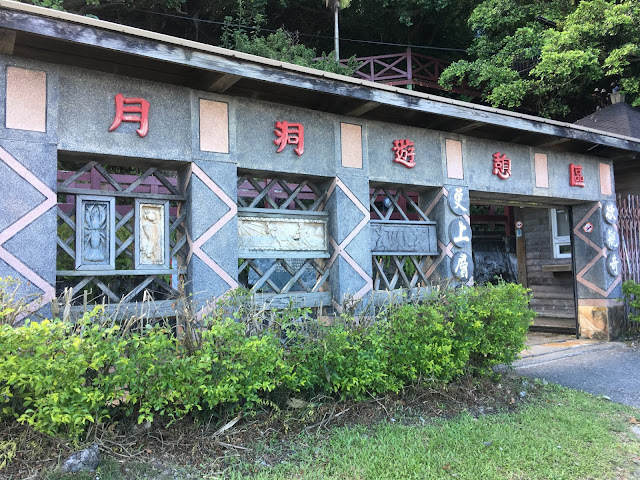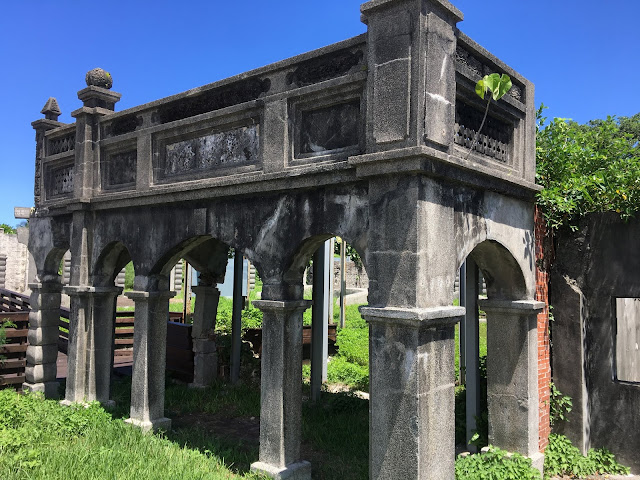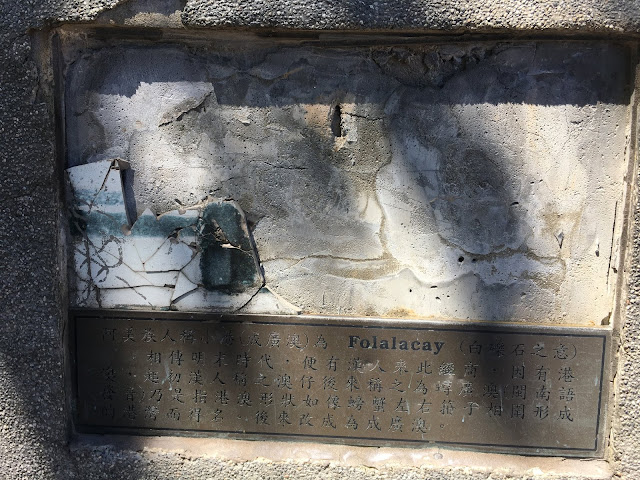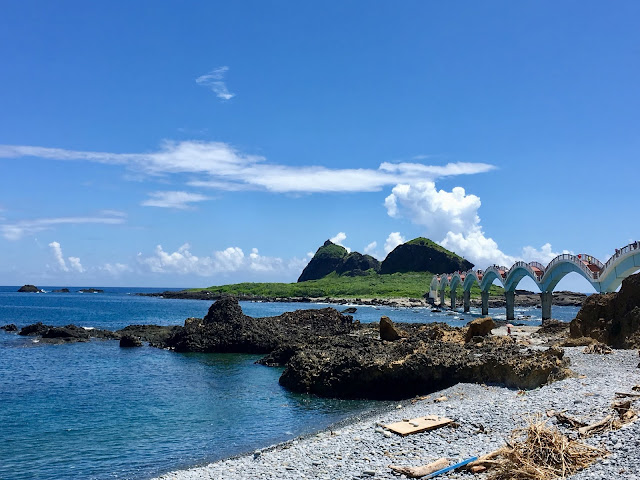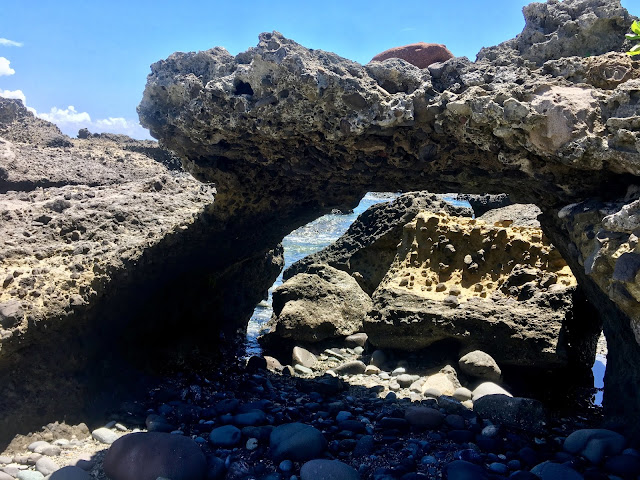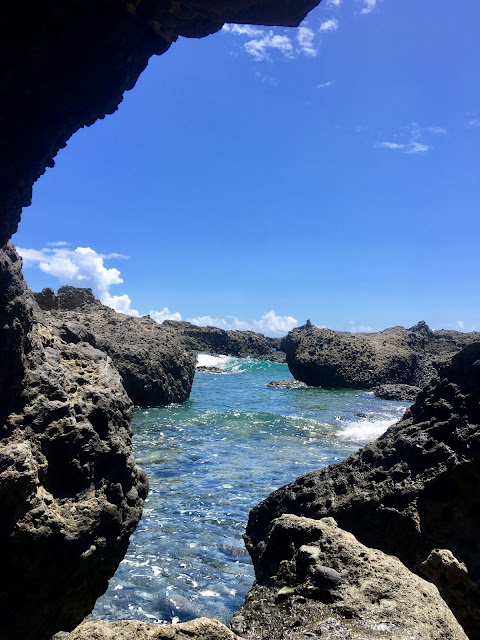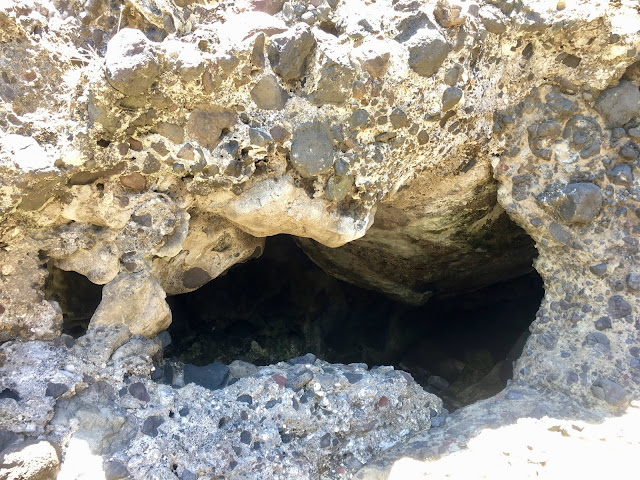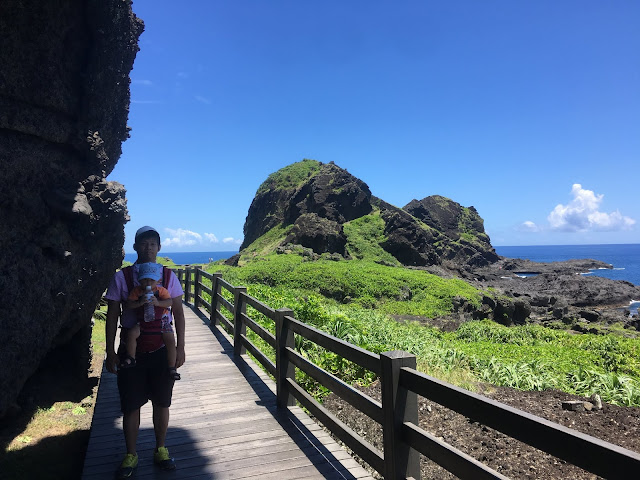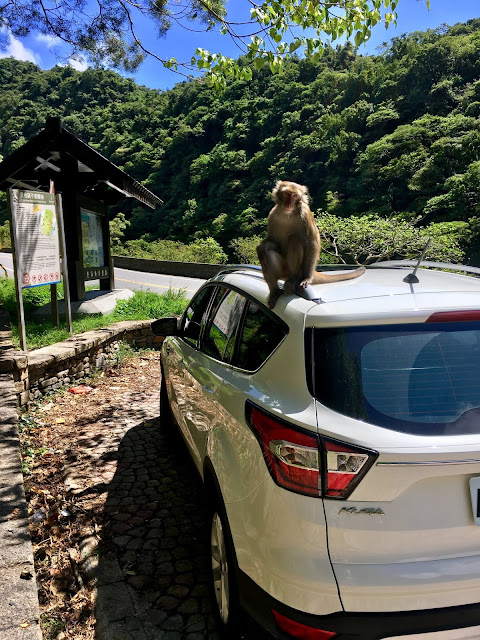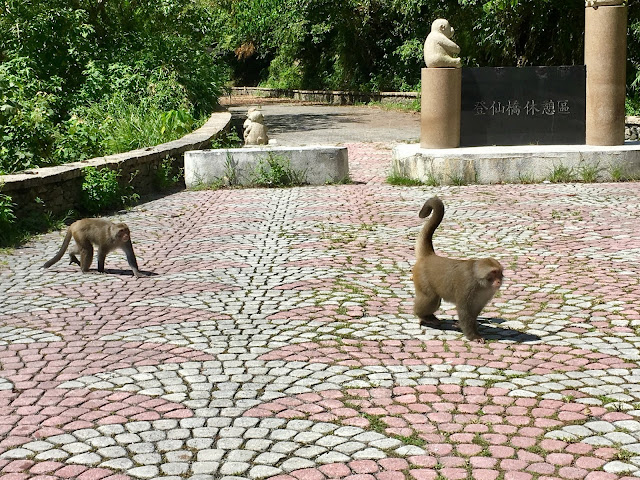Unfortunately, we had less than half a day in Hualien during our trip. We only made quick stops at places on the way to our hotel and visited the Night Market. However, that night our son developed croup and had difficulty breathing. We rushed him to the hospital and stayed overnight. The previous day, he had been coughing, particularly before sleep, and had refused to eat dinner. I wanted to take him to see a doctor earlier, but my husband thought I was overreacting, as many mothers might feel. The next day, he was feeling better, but there was a typhoon approaching, and we weren't sure if we would be able to leave if we stayed longer in the hospital. It was a difficult decision, but we discharged him from the hospital around noon and brought him back to Tainan. He had stayed in the hospital in Hualien for about 16 hours, and he was already breathing well and seemed energetic. The journey back home took around 7 hours, but fortunately, he didn't cry, which made it easier for him to breathe. We visited the hospital once we arrived home to ensure he was fine and received additional medicine. He gradually got better, but the illness brought about changes in him. Suddenly, he stopped drinking milk (he was 18 months old at the time), and he no longer slept during the afternoon. It has already been 2 months since our trip to the east of Taiwan, and now I can barely find time to write my blog and bake cakes for sale. However, I'm happy that he is healthy again.
Sea Worship Area (海祭場)
We made a quick stop at this place, which is used by the aboriginal people for praying to the sea god. There was nobody around when we visited.
Yuedong Recreation Area (月洞遊憩區)
Yuedong is situated in Fengbin Township of Hualien County, about 1 km from the port village of Shitiping. It is a natural stalactite cave with a pool of water about 5 meters deep inside. The water level in the cave rises and falls with the phases of the moon, hence its name "Moon Cave." Moon Cave is located approximately 80 meters above sea level, around 800 meters from the coast, with an entrance height of about 25 meters and a length of about 176 meters. It has a unique shape with two caves inside. The left cave is larger and deeper, extending about 50 meters. At the end, thousands of bats can be seen hanging from the narrow ceiling. The right cave is shorter, spanning approximately 40 meters. The cave exudes a mysterious darkness, with bats clinging to stalactites throughout. It also showcases volcanic rocks, stalagmites, bird's nest fossils, fish head fossils, and other intriguing landscapes. To explore the cave, visitors must take a boat operated by a guide. The boat is equipped with lighting, and the temperature inside Moon Cave is around 20 degrees Celsius, providing a warm environment in winter and a cool respite in summer. It is suitable for swimming all year round.Shitiping (石梯坪)
Shitiping boasts a distinctive rocky landscape carved by wind and seawater. The tides in the area are rich in natural ecological resources, housing crabs, starfish, hermit crabs, and colorful fish. It is a perfect spot to set up camp on the sea erosion platform and witness the morning sun breaking through the clouds, casting a golden glow on the sea.
The entire area consists of an expansive coastal terrace with well-developed sea erosion terrain. Visitors can admire sea erosion platforms, uplifted coral reefs, sea erosion ditches, sea erosion cliffs, and potholes. Shitiping is also a bustling port where fishing boats bring in fresh catches. It is considered the birthplace of whale watching in Taiwan. During the summer, whales and dolphins can often be spotted, attracting tourists to embark on whale-watching boats and marvel at their elegant presence.
The Shitiping tribe, known as Tidaan, was formed by the migration of various ethnic groups to the port tribe. The main ethnic group is the Ami, followed by the Han Chinese. The tribe's ceremonies, music, and lifestyles bear similarities to the port tribes located 2 km away. The fishing festival in mid-June and the Harvest Festival in late July are the main cultural events in the region. In order to preserve the ancestral crafts, the Shitiping tribe established a craft workshop.
Additionally, they actively participate in the preservation of traditional culture through witch dances, traditional coarse foods, and wine-making traditions. Along the southeast corner of the coast, you can observe hills with a pale white color. The landward side of these hills gradually slopes, while the seaward side is steeply inserted into the sea, forming a "single-sided mountain" with different inclination angles on each side.
Small single-sided mountains can be seen throughout the Shitiping area. The slope on the seaward side of the single-sided mountain forms a natural stone ladder eroded by the waves. Natural sea arches are often found in prominent areas with strong sea erosion. After millions of years of sea waves, the final hole is formed, creating a sea erosion gate, also known as a "sea arch." The coast is dotted with numerous narrow "sea erosion ditches."
Shitigang (石梯漁港拍賣市場)
Shitigang Port is located on the northwest side of Shitiping. It holds the distinction of being the birthplace of whale watching in Taiwan, with the highest chance of spotting whales and dolphins in the country. Over 16 species of cetaceans can be found in the open sea, and the most common ones include the tropical spotted dolphin with white spots on its fins, the group-loving Fraser's dolphin, and the spinner dolphin known for its acrobatic spins. The chance of encountering whales and dolphins during a sea excursion is as high as 9.5 percent.
Shimen (石門休憩區)
About 5 kilometers north of Shitiping, you'll find Shimen Beach, a stretch of reef coast that spans several kilometers. It derives its name from a sea-shaped cave found on the beach, which features three interconnected holes. The cave measures approximately 18 meters in width and nearly 5 meters in height. From Shimen Cave to the coast between the People's Victory Day monuments, you can witness well-developed sea erosion landscapes, including sea caves, potholes, sea erosion platforms, and sea erosion ditches. The reef coast serves as a fertile ground for various types of seaweed, while fish and shrimps thrive in the area. As a result, Shimen is not only a popular fishing spot but also a natural classroom for observing coastal marine life.
1. 海祭場: 977花蓮縣豐濱鄉海祭場






